Among the various types of gazelles, we find the common gazelle (Gazella dorcas), the mountain gazelle (Gazella gazella), the dama gazelle (Nanger dama), among many other species. Gazelles are even-toed ungulates belonging to the antelope subfamily. With medium-sized bodies and long, slender legs, they are known for their remarkable agility. If you'd like to learn more about these elegant animals, continue reading this EcologíaVerde article.
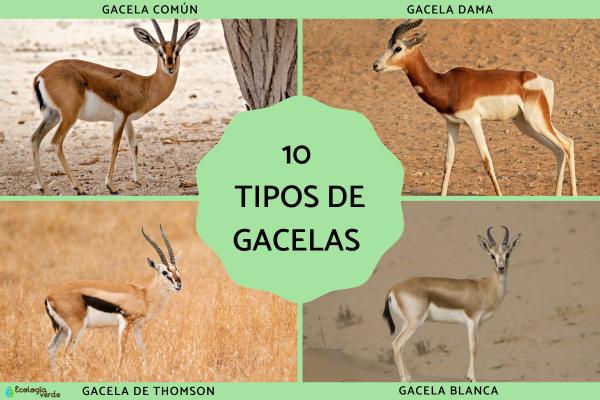
Also known as the Dorcas gazelle, this species is well adapted to the deserts of northern Africa, ranging from Egypt to Western Sahara. It prefers rocky plains with sparse vegetation and avoids hyper-arid sand dune regions. Currently, six subspecies are recognized.

With long ears and curved horns, it can reach up to 65 cm in height and 110 cm in length, weighing between 15 and 20 kg. These gazelles are capable of going long periods without drinking, obtaining most of their water from plant-based food. Their populations are considered vulnerable due to hunting and habitat loss and degradation.
Also called the Arabian gazelle, this species inhabits mountainous areas, hills, and coastal plains of the Arabian Peninsula, often near Acacia vegetation, which forms a major part of its diet. Three subspecies exist in Israel. Compared to the Dorcas gazelle, it is larger and less adapted to extreme heat and arid conditions.

Although protected by law in most of its native range, illegal hunting continues to pose a threat. Additional dangers include habitat fragmentation, road accidents, and predation by feral dogs and jackals.
The largest of all gazelle species, the dama gazelle is native to the Sahara Desert and the Sahel region. Its range has decreased dramatically in recent decades. It can stand up to 120 cm tall and weigh around 75 kg. Its white coat with brown markings and distinct facial features make it easy to identify.
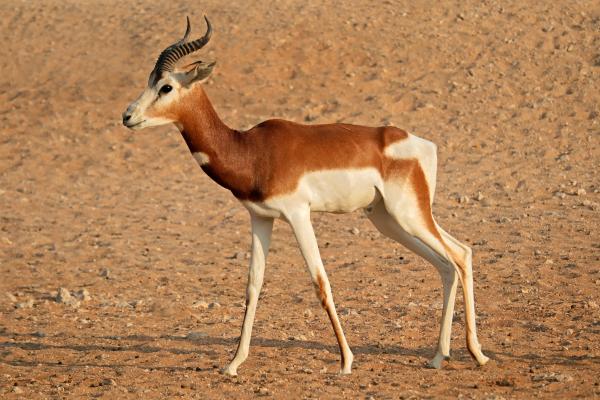
Due to intense hunting and habitat loss, it is listed as Critically Endangered by the IUCN. Several conservation programs are underway, including reintroductions in protected areas of Morocco and Tunisia.
Also called the Atlas gazelle, this species is endemic to the Atlas Mountains and surrounding hills of northwestern Africa. It inhabits semi-arid Mediterranean woodlands composed of Aleppo pine (Pinus halpensis), Phoenician juniper (Juniperus phoenicea), and oak species (Quercus ilex and Q. suber), as well as herbaceous steppes.
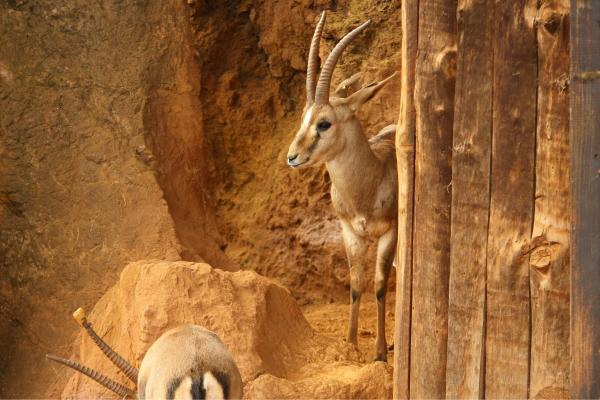
Although categorized as Vulnerable by the IUCN, it is legally protected in all countries within its distribution. Conservation efforts include plans to reintroduce it in select areas of Tunisia.
Native to East Africa, especially Kenya and Tanzania, Grant’s gazelle lives in grasslands and open savannas, where it feeds on low-lying grasses and shrubs. It can reach a height of 95 cm and a weight of up to 80 kg, making it one of the largest gazelles. Its long, ringed horns and distinctive facial markings stand out.
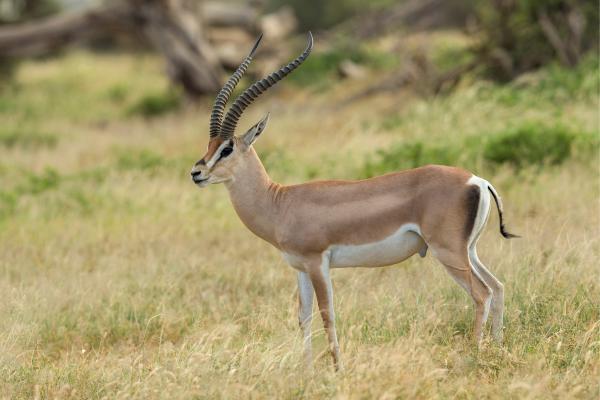
Despite facing population declines due to hunting and habitat loss, it is currently classified as Least Concern by the IUCN.
Also known as the Tommy gazelle, this agile species is native to East Africa, particularly Kenya and Tanzania. It grows to about 60 cm tall and weighs between 15 and 25 kg. Its coat is light brown with a prominent black stripe running along each side of its body.
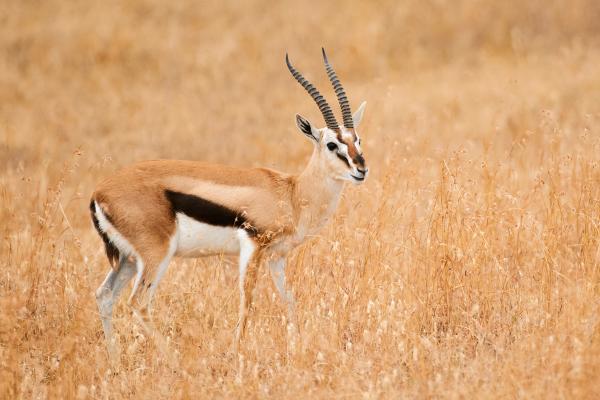
As a primary prey for large predators like cheetahs and crocodiles, it thrives in savannas and grasslands with ample vegetation. Though still listed as Least Concern, its numbers are declining due to hunting and competition with livestock.
This large gazelle species inhabits savannas and shrublands in Eritrea, Ethiopia, and Sudan. It reaches about 90 cm in height and up to 45 kg in weight. Its coat is light brown with darker markings, and it has long, lyre-shaped horns.

Known for its seasonal movements in search of food and water, it suffers from illegal hunting and agricultural expansion. The IUCN classifies it as Vulnerable.
Also known as the white gazelle, it inhabits the Sahara Desert regions of Algeria, Tunisia, Libya, and Egypt. It is highly adapted to extreme desert environments, especially sand dunes where it seeks shelter and forage. It reaches about 65 cm in height and weighs between 20 and 30 kg.
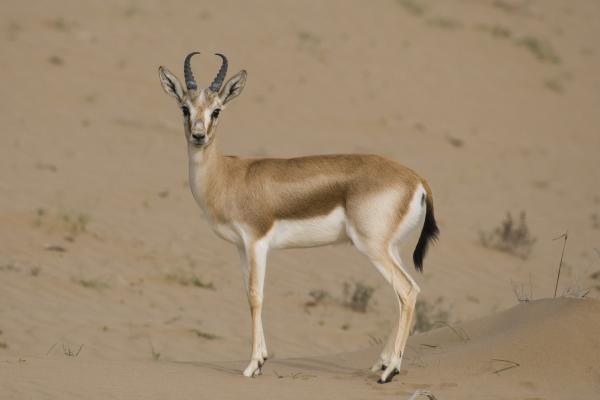
Its nearly white coat reflects sunlight, helping it stay cool in high temperatures. With long, slender horns curved backward, this species is Critically Endangered, mainly due to poaching and habitat loss.
Found across the Sahel region of West Africa, this gazelle inhabits dry savannas and semi-desert steppes. It grows to about 70 cm tall and weighs between 15 and 30 kg. Its reddish coat and facial stripes make it distinctive.

Feeding on grasses and leaves, it can survive for long periods without water. Due to hunting and agricultural expansion, it is considered Vulnerable by the IUCN.
Endemic to arid regions of Somalia, this small-sized gazelle reaches up to 60 cm in height and weighs 15–25 kg. Its pale coloration is well suited to desert environments. It has short, slightly curved horns.
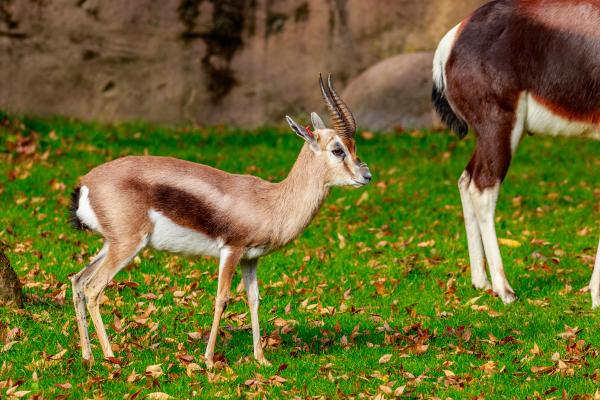
Speke’s gazelle is currently listed as Vulnerable due to habitat destruction and poaching. Conservation projects are underway in some areas. The species is named after explorer John Hanning Speke, known for discovering the source of the Nile and Lake Victoria.
animal tags: gazelles
We created this article in conjunction with AI technology, then made sure it was fact-checked and edited by a Animals Top editor.